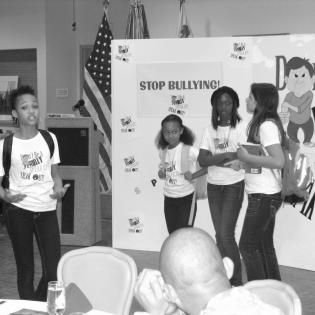Exploring Philanthropic Motivations
Youth analyze personal reasons for taking action and compare them to the researched motivations for giving.
The learner will:
- give examples of motivations for giving and serving.
- Copies of handout Motivations for Giving
- Prince, Russ A. and Karen M. File. The Seven Faces of Philanthropy. San Francisco: Jossey-Bass, 2001: 0-7879-6057-8.
Instructions
Anticipatory Set:
Brainstorm some actions people commonly do for others or the community, such as get help for a friend who is hurt, give pocket change to support a cause, or pick up trash in a shared space. Come up with several ideas together.
Brainstorm ideas of why we give and take action to help others.
Tell the youth that some experts have studied the question of why people give and come up with seven motivations for giving and serving:
- community
- religion
- good business
- social function
- giving back
- family tradition
- selfless concern for others
Display the handout Motivations for Giving for all to see. Read through and discuss the seven motivations. Talk about examples of each.
Refer to the list they generated about why we give, and match up their ideas with the seven motivations. Look for similarities and differences.
Introduce three new terms and discuss how these three terms relate to the seven motivations for giving.
- enlightened self-interest (to sacrifice a small part of their time and resources to the benefit of the whole, which, in turn, benefits themselves)
- altruism (selfless concern for the welfare of others)
- egoism (theory of ethics that sets as its goal the benefit, pleasure, or greatest good of oneself alone)
Youth write a paragraph about their own personal motivations for giving, including examples. They should refer to vocabulary or concepts from the seven motivations and the three new terms above.
The motivations discussion may spark some reflections on things they would each like to do for the common good.
Handouts
Philanthropy Framework
-
Strand PHIL.I Definitions of Philanthropy
-
Standard DP 01. Define Philanthropy
-
Benchmark MS.1 Define philanthropy as individuals and organizations providing their time, talent, and/or treasures intended for the common good throughout history and around the world. Give examples.
-
Benchmark MS.4 Give examples of how individuals have helped others.
-
-
-
Strand PHIL.II Philanthropy and Civil Society
-
Standard PCS 01. Self, citizenship, and society
-
Benchmark MS.2 Discuss why some animals and humans will sacrifice for the benefit of unknown others.
-
Benchmark MS.4 Describe the characteristics of someone who helps others.
-
-
Standard PCS 07. Skills of Civic Engagement
-
Benchmark MS.3 Participate in acts of democratic citizenship in the classroom or school, such as voting, group problem solving, classroom governance or elections.
-
-
-
Strand PHIL.III Philanthropy and the Individual
-
Standard PI 01. Reasons for Individual Philanthropy
-
Benchmark MS.1 Define and give examples of the motivations for giving and serving.
-
Benchmark MS.2 Explain and give examples of enlightened self-interest, egoism, and altruism as they relate to philanthropy.
-
-
-
Strand PHIL.IV Volunteering and Service
-
Standard VS 01. Needs Assessment
-
Benchmark MS.1 Identify a need in the school, local community, state, nation, or world.
-
-
